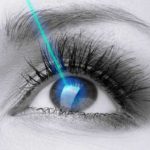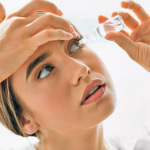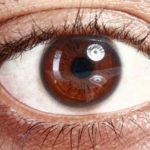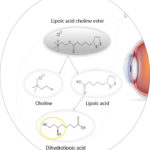PRESBYOPIA: THE NEED FOR READING GLASSES FROM AGING
Presbyopia — or “aging of the eye” — is the age-related loss of our ability to see up close. It happens to everyone eventually, typically starting around age 40 and progressing gradually until the early 60’s. It is caused by the lens inside the eye getting physically stiffer with age so it becomes less and less flexible and unable to adjust focus to different distances.
READING GLASSES
Also known as “cheaters”, reading glasses are the simplist, most common solution to correcting presbyopia. Reading glasses are inexpensive and are non-prescription. They can be found at stores such as Rite-Aid, CVS, or Costco. Essentially they work as magnifying glasses and come in various powers.jju
LASIK, PRK LASER VISION CORRECTION EYE SURGERY
LASIK and PRK laser eye surgery do not directly make presbyopia better or worse since they work outside the eye on the cornea, while presbyopia affects the lens inside of the eye. This means if someone has LASIK or PRK laser vision correction surgery after age 40, they will need reading glasses to the same degree as if they were born with perfect distance vision. One approach LASIK and PRK can use to help treat presbyopia is “monovision“: setting one eye for distance (the dominant eye) and the other eye for either midrange or close vision (the non-dominant eye), allowing for near and far vision without reading glasses or distance glasses. This can work very well for many people, but even when it is working well, it is important to realize that this strategy does not actually make someone younger or make their lens flexible again. LASIK or PRK, in fact, does not affect the lens at all.
EYE DROPS TO TREAT PRESBYOPIA AND REDUCE THE NEED FOR READING GLASSES
A very promising non-surgical approach to presbyopia is the use of topical eye drops. In fact, this is creating quite a bit of buzz this week at our annual meeting of the American Academy of Ophthalmology in San Francisco. There are two types of eye drops under developoment: 1) drops that constrict the pupil and 2) drops that actually make the lens flexible again. In the future, it is even possible that both types of drops would be used together to give even great effect. Of course, before these drops can be widely used, both their safety and their effectiveness need to be established. Both types are currently in FDA clinical trials.
Eye Drops to Constrict the Pupil To Improve Near Vision
If you have ever been to a county fair, you may have tried “pinhole” glasses, glasses with very tiny holes that can sharpen up images. From an optics standpoint, a pinhole is a rudimentary way to focus light without a lens. The original Kodak film camera used a pinhole to focus light instead of a lens. In photography, the “depth of field” (zone of focus) can be controlled by changing the aperature (opening) of the camera. With a wide aperature, the depth of field is kept very tight and short. With a small aperature, the depth of field expands greatly. Using this concept, researchers have sought to find the ideal pupil size to, on one hand, maximize depth of field while, on the other hand, not being so small as to make the view too dark by limiting too much entering light. Three companies are trying to develop eye drops that will safely keep the pupil the perfect size to allow a large enough depth of field to allow near and far focus: Allergan, Presbyopia Therapies, and Orasis Pharmaceuticals. These drops could be used in both eyes or just in the non-dominant eye. These drops are called “miotics”. Allergan’s drop entered Phase III FDA Clinical Trials last year and approval is expected in 2021. They will be once a day drops with rapid onset action and, of course, are reversible in that they wear off. Presbyopia Therapies drop will be called “Liquid Vision” and the Orasis drop is currently called CSF-1. CSF-1 just completed FDA Phase IIb trials with 160 subjects studied in 7 sites. So far all studies show CSF-1 has an excellent safety profile. One of the appealing things about CSF-1 is that it uses a very dilute recipie of known substances whose safety has already long been established. I met the Chief Executive Officer of Orasis, Eldad Kedar and was very impressed by him and his company.
Eye Drops to Make the Lens Flexible Again
The “Holy Grail” of presbyopia treatment would, of course, be to reverse aging and literally make the lens more flexible. Novartis Pharmaceuticals, the giant Swiss pharmaceutical company, has a fascinating product in the pipeline called UNR844. This actually was originally an American invention by a small start up in Texas. To get technical for a minute, the way the lens works in a younger person with no reading problems is that normal sulfhydryl bonds allow cytosol to move to the center of the lens, enabling it to change its shape to focus. As aging happens, oxidation causes these sulfhydryl bonds to change to form disulfide bonds form between the crystalline proteins of the lens. This blocks the movement of cytosol and the lens loses its ability to flex and change its shape. Novartis’ UNR844 drop has lipoic acid choline ester, which is hydrolyzed upon entering the eye into choline and lipoic acid. Once inside the eye, lipoic acid becomes dihydrolipoic acid by reduction. Dihydrolipoic acid, once in the lens, removes the disulfide bonds that were cross linking the lens proteins, allowing the cytosol to move in the lens again. This allows the lens to regain its ability to flex and change its shape. Literally, this is an anti-aging process. In animal testing, one drop of UNR844 used three times a day caused a 40% improvement in lens flexibility after 5 weeks. The drug is now in FDA Phase II studies.
COMBINATION STRATEGY AS THE FUTURE: BLENDED VISION LASIK AND ANTI-PRESBYOPIA EYE DROPS?:
I have long thought there may ultimately be a combining of different technologies to give an overall cumulative correction of presbyopia. Based on the very early evidence we have so far, no single eye drop strategy works perfectly by itself. Initial results suggest the pupil constricting drops improve near vision, but do not perfect it. Similarly, the preliminary data for UNR844 shows a 40% improvement in lens flexibility in animals, not 100%. In terms of surgical options, I have found that smaller degrees of monovision (one eye for distance, one eye set for mid-range rather than close) work better by allowing the two eyes to still work as a team. This smaller, less severe, version of monovision is called “blended vision.” The only downside to blended vision compared to stronger degrees of monovision is that the very near vision is not as good since the non-dominant eye is surgically set for mid-range rather than close-range. Perhaps in the future we will use a combination of pupil constricting drops and lens flexibility drops either with blended vision or simply with using LASIK or PRK to set both eyes in their natural distance focus (“stereo-vision”).






